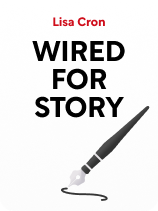

This article is an excerpt from the Shortform book guide to "Wired for Story" by Lisa Cron. Shortform has the world's best summaries and analyses of books you should be reading.
Like this article? Sign up for a free trial here.
How should flashbacks be used in a story? What role do subplots play in a narrative?
Good stories are powered by conflict. Struggle moves a plot forward toward its resolution. But, our brains can get overloaded when we don’t get breaks from conflict in a story. Lisa Cron, who approaches story writing from a neurological perspective, explains that effective story pacing is the answer.
Read on for Cron’s exploration of two story pacing techniques: subplots and flashbacks.
Story Pacing Devices
Stories are about change, and conflict is what drives change. But, cognitively, readers can handle only so much conflict at once. Cron writes that it’s important to present your story in a way that gives the reader a break after moments of extreme conflict so they can process what’s happened and try to understand how it fits into the larger story. Story pacing devices such as subplots and flashbacks can help you provide readers with this break so they don’t become overwhelmed by constant conflict.
(Shortform note: You can also break up your story’s pacing with chapter and scene breaks, switching between action and dialogue, and changing up the length and type of sentences you’re using. To check your story’s pacing, try reading it out loud to get a sense of how long it takes to get through and where it seems to slow down or speed up.)
Subplots
Subplots are secondary stories that add to the overall story, explains Cron. They can give the reader some distance from the major conflict and allow them to process what’s happened. But, to be effective, they must have an impact on the main story and the protagonist, either internally or externally.
They can also help flesh out other characters whose plots can provide insight into the main storyline. Writers can use subplots to mirror the main plot, showing an alternate way that the main storyline could play out, usually taking an opposite path from the one the main story takes.
In any case, as with everything else in your story, all the information in a subplot must be something the reader needs to know to understand the main plot and its impact on the protagonist.
(Shortform note: While subplots help you flesh out secondary characters’ stories, you may want to include an additional secondary plot that continues to focus on your protagonist. Such a plot is known as a parallel plot, or, a B-story. For example, if you’re writing an action story as your main plot, you may have the protagonist pursuing a love interest in the parallel plot. These, just like subplots, can help you change up the pacing and give the reader a break from conflict, but they too must directly impact the main plot to be effective. If you can take them out without the main plot being impacted, then they don’t belong in the story.)
Flashbacks
According to Cron, flashbacks also provide an opportunity to give the reader a break from the main conflict while supplying important information. They pull the reader out of the immediate story and into a different setting (often a subplot)—because of this, they should only be used when they’re absolutely essential because otherwise, the reader will feel like they’ve been yanked out of the story they were enjoying for one they don’t have any investment in.
Flashbacks should be placed only in spots where they provide context that’s necessary for understanding what happens next in the main story, and the reader should be able to tell right away what the purpose of the flashback is—they should be able to understand why they need this particular information right now.
| Flashbacks and Flash-Forwards Flashbacks can be difficult to work into your narrative because they represent such a big break from the action. It’s important to make clear to the reader that a flashback is happening, and experts recommend including a trigger in the story that shows why the character is flashing back to a previous memory. Also, be sure to make the transition clear through your verb tense so the reader knows exactly when the flashback starts and ends. Another less common technique for adding new information through time jumps is to use a flash-forward, which allows you to implant information about what’s still to come in the plot. While this tells your reader what will happen in the future, it leaves them wondering how it will happen—and while it may feel like you’re spoiling the story, as discussed above, spoilers generally don’t reduce the enjoyment of a story because the “how” is still compelling to the reader. |

———End of Preview———
Like what you just read? Read the rest of the world's best book summary and analysis of Lisa Cron's "Wired for Story" at Shortform.
Here's what you'll find in our full Wired for Story summary:
- How humans have a neurological need for stories
- The formula that the human brain expects to encounter in a story
- How to build a protagonist that engages your reader






